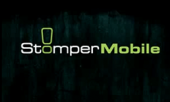- You see visitors landing on the page in the wrong language … and they’re leaving fast
- You have no idea why one page is getting no visitors, while the version in other languages is doing fine
- One language version has suddenly dropped in the Google rankings
- Or maybe even your entire website is tumbling down the search engine results
People come to us with these problems all the time. Because with multilingual SEO, a lot can go wrong. But if you do it right, there’s so much to gain:
- You don’t sabotage your own rankings by letting pages in different languages compete with each other
- Visitors enter your site in their language … and they’re staying
- You don’t get a penalty for duplicate content
- So instead of losing SEO value, your site is climbing up the search results – in all languages
So how do you do it right? Good question. We couldn’t find any courses that explain this properly. That’s why we created one: the Multilingual SEO course. After this online course, you will be able to:
- Pick the right keywords in different languages so your potential customers can find you
- Translate SEO copy so that you don’t sabotage your own rankings
- Pick the right domain structure for your multilingual site
- Make sure Google indexes the correct page for the correct user – by implementing hreflang correctly
What will you learn?
The Multilingual SEO training consists of four modules: an introduction, keywords and content, domain structure, and the hreflang standard. Each of these modules consists of several videos in which Yoast SEO experts explain the topics in easy to understand language. After reading the supporting articles, you can do a quiz to test your knowledge. When you’re done, you get a Multilingual SEO certificateshowing that you’ve mastered this exciting international SEO strategy.
1. Introduction to multilingual SEO
In the introduction, we’ll take you behind the scenes of Google’s search enginesto you show how it works. This is essential knowledge that’ll help you make the most of your SEO work. After this, we’ll talk briefly about the way we practice SEO: holistic SEO.
2. Keywords and content in multilingual SEO
The second part of the course is all about content for your international site. How do you do international keyword research for SEO? And how do you create and maintain an international keyword research sheet? We’ll take you by the hand and show you how to write copy for multiple regions and how to transcreate international content. This way, you’ll learn how to create content that’s easy to understand for a native speaker.
3. Domain structure in international SEO
Part three of the Multilingual SEO training sets out to answer one important question: Which URL structure gets the best result in a specific situation?You’ll learn all about top-level domains (TLDs), the use of subdirectories and subdomains, and how to target multiple languages within a country.
4. hreflang: the most important tool for multilingual SEO
When doing international SEO, hreflang is your best friend. You should learn this inside out. But, as we’ve said earlier, hreflang isn’t easy to understand, let alone implement correctly. That’s what we set out to solve in this Multilingual SEO course. We’re taking your from the very basics, all the way to different implementation choices and an evaluation of the risks of hreflang. The end result? You’ll be able to implement hreflang without breaking a sweat!
Get Download Yoast – Multilingual SEO Right Now!













Reviews
There are no reviews yet.